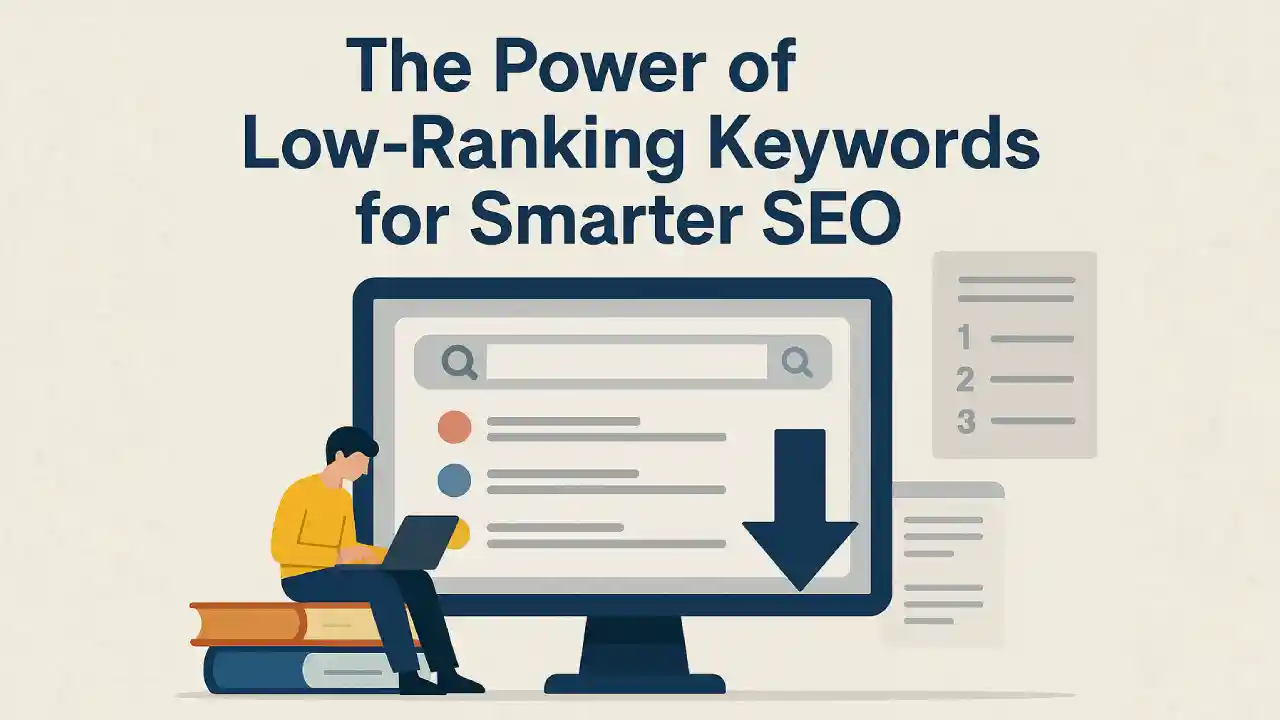Published by NewsPR Today | October 2025
In the ever-evolving landscape of digital marketing, Google’s recent policy shifts and algorithmic adjustments serve as a stark reminder of who ultimately controls the search ecosystem.
But rather than viewing these changes through a lens of frustration or defeat, the savvy digital strategist recognizes them for what they truly are: a call to return to fundamentals and a window into Google’s broader strategic positioning in the age of AI-driven search.
The Philosophy That Transcends Algorithm Updates
At the heart of sustainable SEO strategy lies a simple but profound truth: create content that answers questions better than anyone else. This philosophy, rooted in user-first thinking rather than algorithm-chasing, becomes increasingly valuable as search engines grow more sophisticated and AI platforms like ChatGPT, Perplexity, and Google’s own SGE reshape how users discover information.
Read more: How Low-Ranking Keywords Can Make You Smarter at SEO
The fundamentals remain constant regardless of algorithmic volatility:
Answer-first content architecture. Every page should address a clear user intent with precision and depth. The days of keyword stuffing and thin content have long passed. Today’s successful content anticipates follow-up questions, provides comprehensive coverage, and delivers value immediately.
Structured data implementation. Schema markup isn’t just technical housekeeping; it’s the language that helps search engines understand your content’s context, relationships, and value. As Google’s Knowledge Graph continues to expand and featured snippets dominate search results, structured data becomes your direct line of communication with the algorithm.
User trust as the ultimate ranking factor. E-E-A-T (Experience, Expertise, Authoritativeness, Trustworthiness) isn’t a checkbox to tick; it’s the foundation upon which sustainable visibility is built. Demonstrating genuine expertise, backing claims with credible sources, and maintaining transparency about content authorship all contribute to the trust signals Google increasingly prioritizes.
These principles don’t just survive algorithm updates; they thrive because they align with Google’s core mission: organizing the world’s information and making it universally accessible and useful.
Google Reminds Everyone Who’s Boss
Every few months, Google rolls out changes that send ripples through the digital marketing community. Whether it’s a core algorithm update, a new set of quality guidelines, or policy changes that affect data access, the underlying message remains consistent: Google sets the rules, and the rest of us adapt.
But here’s the reframing that separates strategic thinkers from reactive panickers: these reminders aren’t punitive; they’re clarifying. When Google tightens its standards or shifts its policies, it’s often pushing the ecosystem back toward fundamentals that benefit users. Quality over quantity. Usability over manipulation. Relevance over reach.
The recent volatility in search rankings following various core updates illustrates this perfectly. Sites that suffered significant traffic losses often shared common characteristics: thin content, poor user experience, questionable link profiles, or lack of genuine expertise. Meanwhile, sites that maintained or improved their positions typically demonstrated strong adherence to those timeless fundamentals.
This isn’t to say that Google’s changes are always fair or that false positives don’t occur; they do, and recovering from an algorithmic penalty remains challenging. But the broader pattern holds: Google rewards what it says it rewards. The challenge lies in actually doing the work rather than looking for shortcuts.
The Strategic Implications of Restricted Data Access
Beyond algorithmic updates, Google’s recent policy changes around search data access reveal a more calculated strategic move—one with significant implications for the future of search intelligence and competitive dynamics.
The &num=100 Parameter Removal
The removal of the &num=100 parameter from Google Search represents more than a technical adjustment. This seemingly small change prevents users and tools from requesting 100 results per page instead of the default 10, fundamentally altering how data can be efficiently collected from search results.
For SEO professionals, researchers, and competitive intelligence tools, this change introduces intentional friction into the data collection process. What once required one request now requires ten. The efficiency gains that made comprehensive rank tracking and SERP analysis feasible at scale suddenly evaporate.
This isn’t accidental. It’s a deliberate move to create barriers for automated data collection, particularly from scrapers and unauthorized third-party tools that rely on high-volume queries to build competitive products or services.
Rising API Costs and Access Restrictions
Simultaneously, Google has been steadily increasing costs and tightening access requirements for its official APIs, including the Custom Search JSON API and other search-related services. For businesses and tools that play by the rules and use official channels, the cost of doing business has increased substantially.
This two-pronged approach, restricting unofficial access while raising prices for official access, achieves several strategic objectives:
Protecting search data as a competitive moat. Search results and ranking data represent Google’s crown jewels. By making this data harder to access at scale, Google maintains tighter control over who can build intelligence tools, competitive analysis platforms, or alternative search interfaces using Google’s data.
Monetizing data access. Those who genuinely need programmatic access to search data must now pay significantly more for the privilege, creating a new revenue stream while ensuring only serious, well-funded players can afford comprehensive access.
Favoring strategic AI partnerships. Here’s where the story gets particularly interesting. While Google restricts broad access to search data, it has simultaneously formed partnerships with major AI platforms, the very tools that are beginning to compete with traditional search. ChatGPT, Perplexity, and other AI-driven answer engines have increasingly become the first stop for information discovery, particularly among younger users and for complex queries.
By controlling the data pipeline that feeds these platforms while restricting access to potential competitors, Google positions itself as the essential partner in the AI search revolution rather than a victim of disruption.
The Broader Context: AI-Driven Search and Market Consolidation
These policy changes don’t exist in a vacuum. They are part of Google’s response to the most significant threat to its search dominance in decades: AI-driven answer engines that bypass traditional search results entirely.
When users ask ChatGPT or Perplexity a question and receive a comprehensive, sourced answer without clicking through to websites, the traditional search ecosystem, built on clicks and ad impressions, faces fundamental disruption. Google understands this shift and is positioning accordingly.
The company’s development of Search Generative Experience (SGE) and Gemini integration directly into search results represents its own AI-first vision. But unlike independent AI platforms that must scrape, license, or synthesize information from various sources, Google controls the world’s largest index of web content.
By restricting how others can access and utilize this data at scale while simultaneously partnering with select AI platforms on its own terms, Google maintains leverage over the emerging ecosystem. Smaller players and independent developers face higher barriers to entry, while large, well-funded AI companies negotiate deals that serve Google’s strategic interests.
This consolidation of power is not necessarily malicious, but it does raise important questions about competition, innovation, and the future accessibility of search data for research, analysis, and tool development.
What This Means for Digital Marketers and Content Strategists
For those building digital strategies in this environment, several key takeaways emerge:
Diversification matters more than ever. Relying solely on Google traffic has always carried risk, but that risk intensifies as Google’s policies become more restrictive and its search interface evolves to keep users within its ecosystem. Building audiences through email, social platforms, direct traffic, and emerging AI channels reduces vulnerability to single-platform volatility.
First-party data becomes invaluable. As third-party data sources become more expensive and restricted, the ability to understand your own audience through analytics, customer data platforms, and direct feedback mechanisms provides a competitive advantage that no policy change can diminish.
Quality documentation and knowledge base content gains strategic value. AI platforms need sources to cite and reference. Comprehensive, well-structured, authoritative content positions your brand as the source these platforms turn to when answering user queries in your domain, even if the user never clicks through to your site.
Technical SEO fundamentals remain non-negotiable. Site speed, mobile optimization, Core Web Vitals, structured data, and crawlability are not just nice-to-haves. They are the prerequisites for visibility in an increasingly competitive and algorithmically sophisticated environment.
Brand building transcends algorithm dependency. Perhaps the most important lesson is that the strongest defense against platform volatility is a brand that users actively seek out. When people search for your brand name directly, type your URL into browsers, or recognize your content when cited by AI platforms, you have built something that algorithm updates cannot take away.
Looking Ahead: Adaptation in the Age of AI Search
The search landscape of 2025 and beyond will look substantially different from the Google-dominated ecosystem of the past two decades. AI-driven answers, voice search, multimodal queries, and personalized result sets will continue to fragment the traditional “ten blue links” paradigm.
In this environment, the winners will not be those who find clever workarounds to Google’s latest restrictions or who discover temporary algorithm loopholes. The winners will be those who genuinely answer their audience’s questions better than anyone else, build authentic expertise and authority, and create experiences that users value enough to return to directly.
Google’s tightening control over search data access and its strategic positioning around AI partnerships represents a company protecting its moat while adapting to technological change. For digital strategists, this reality demands a return to fundamentals coupled with forward-thinking diversification.
The game has changed, but the principles that drive long-term success remain remarkably consistent: understand your audience, create genuine value, build trust, and never depend entirely on platforms you do not control.
In an ecosystem where Google reminds us regularly who is boss, the most powerful response is not frustration; it is building something valuable enough that it succeeds regardless of who controls the search algorithms.
The digital marketing landscape continues to evolve at unprecedented speed. The strategies that thrive aren’t those built on platform dependencies and algorithmic arbitrage, but those rooted in genuine value creation, user understanding, and adaptable thinking. As search transforms from a list of links to AI-mediated answers, the fundamental question remains unchanged: does your content deserve to be the answer?



